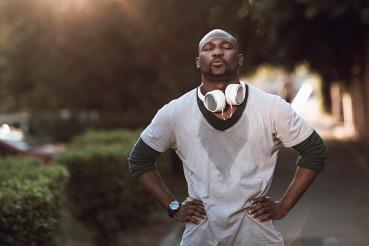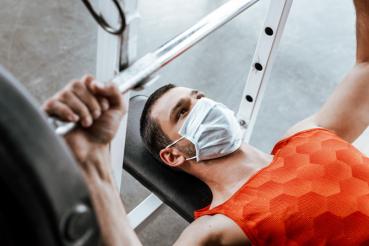If COVID-19 restrictions have kept you home exercising less and eating more, it could be affecting your health as could the stress, boredom and isolation of this time. Exercise can help.
Exercise helps you build muscle mass, maintain bone density and avoid osteoporosis, improve balance, prevent weight gain, decrease stress and improve sleep. It can also help prevent disease.
“Exercise is especially important now because it boosts your immune system and helps you fight off bacteria and viruses,” says Arif Saleem, MD, an orthopedic surgeon and medical director at Castle Orthopaedics & Sports Medicine. In fact, he says people with chronic health conditions may benefit the most from exercise because physical activity has been shown to improve diabetes, heart health and lung function and decrease high blood pressure.
Make exercise fun
Most gyms and fitness centers have reopened, so that is now an option, but Saleem suggests other activities as well — like getting outside to exercise. “Make exercise fun,” he advises. “Play pickle ball or find something different.” If your form of exercise is enjoyable, you’re more likely to stick with it.
Tennis, golf, biking, walking and doing chores are all activities that pose a low risk of COVID-19 infection. He stresses the importance of walking, whether on a treadmill, on a hiking trail or around your neighborhood. Studies show that the more you walk, the longer you’ll live, he says.
Include resistance training
Saleem says you should aim for 30 minutes a day, five days a week, of moderate-intensity exercise or 75 minutes a week of vigorous exercise, plus resistance training twice a week.
Resistance training refers to exercises where you move your limbs against resistance, which can come from your own body weight, gravity, bands or weights. Resistance exercises include pushups, planks and yoga; they improve muscle strength, endurance, balance, coordination, core strength and flexibility and decrease risk of injury. They can even improve arthritis symptoms.
You can design your own workout, incorporating cardiovascular exercises (like swimming, running, walking, cycling or dancing), exercises to increase strength (pushups, squats, planks and crunches), and exercises to improve flexibility and balance (yoga or tai chi). You can adjust your workouts to accommodate stiff or injured joints or to keep from getting bored with your routine.
Stretch before and after
Saleem stresses the importance of stretching both the upper and lower body before and after every workout. “It helps you prevent injury and have a better experience working out,” he explains.
He suggests five minutes of stretching and a two- to three-minute warmup before your workout, then a two- to three-minute cool down and two to three more minutes of stretching afterward. “Use proper form, listen to your body and avoiding pushing through pain,” he says.
Track your progress
To help you stay on track, Saleem recommends tracking your progress, using paper or technology like your smart phone or smart watch. “Put your workout on your schedule and don’t fall behind,” he says. “Plan your exercise for a time of day when you have energy, and use social networking so you and your friends can motivate one another.”
For more recommendations from Saleem — including specific exercises and how to determine your target heart rate — watch this presentation.




